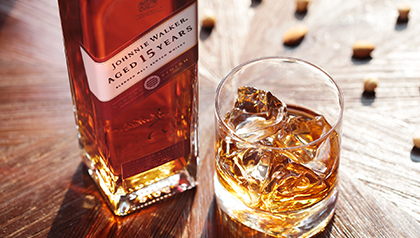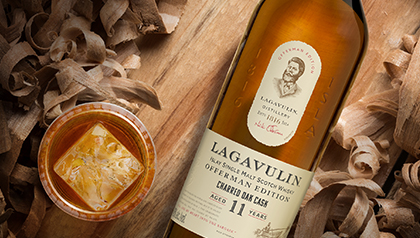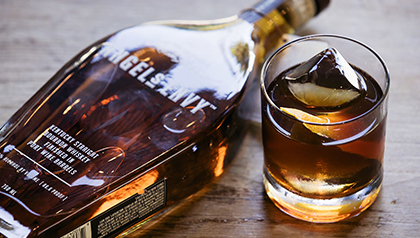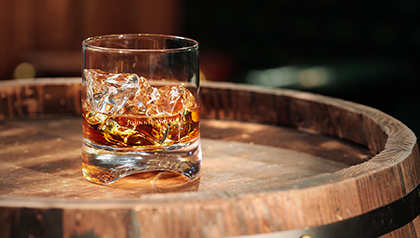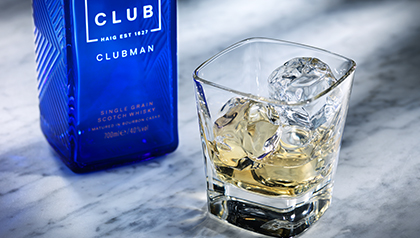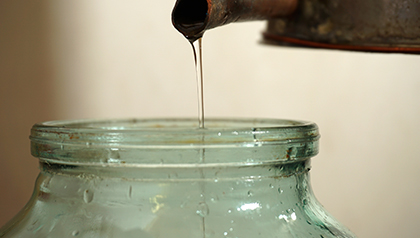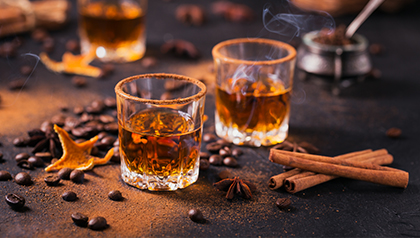Loading...
Checkout using your account
Checkout as a new customer
Creating an account has many benefits:
- See order and shipping status
- Track order history
- Check out faster
Whiskey Types
Apart from all whiskey brands and whiskey from different countries there are actually only a few real types whisky, these are:
Whisky types
In the Netherlands, whisky consumption roughly consists of about 90% Scottish whisky, of which 85% is blended Scotch and 5% is malt whisky. The remaining 10% consists of Irish, American, and Canadian whisk(e)y. A difference is that the Scottish and Canadian drinks are spelled as whisky, while the Irish and American as whiskey. Broadly speaking, the production method of these whiskies is not too different from the Scottish. However, they lack the specific Scottish climate conditions and the thereby so characteristic character of a Scotch.
Scotch Whisky
Scottish Whisky is an ancient and completely unique product. Its characteristic quality and distinct taste depend on typically Scottish factors such as the exceptional climate, the purest water, and the distinctiveness of the peat. The name comes from the Celtic 'Uisge Beatha' which means water of life. Through the corruptions 'Uisge' (pronounced: wieske) and 'Usky', the name Whisky was formed. It was produced in many thousands of small family or village distilleries and consumed locally. The Scots are rightly proud of their beautiful, characterful national drink which, even when consumed outside Scotland, always retained something noble and aristocratic.
Irish Whiskey
Differs by, among other things, the use of other grains. In addition to barley, also oats and wheat. Moreover, it is distilled 3 times (the Scottish 2 times). The malting (see hereafter) does not happen over a peat fire.
American Whiskey
Produced in the Midwest of the U.S. in the states of Kentucky and Tennessee. Bourbon Whiskey must contain at least 51% corn and Rye Whiskey 51% rye.
Canadian Whisky
Is made from: rye, corn, and malted barley. In the blend, neutral grain alcohol is mixed with Rye-Whisky.
The importance of craftsmanship
The production of Scotch Whisky is quite a complex affair and must be carried out with the utmost care. The craftsmanship and experience of the ‘stillman’ – responsible for the final product – is therefore very important.
Simplified, the production process proceeds as follows: The best quality barley is germinated in a moist condition over a few days on the malt floor (kiln) and then dried (malted) over a peat fire. The grains are stripped of their sprouts and milled. Then, with the addition of hot water in the Mash-tun, the conversion of starch from the grain into malt-sugars takes place, creating the wort. Fermentation, the conversion of sugars into alcohol, then occurs by adding yeast in the wash-bak. This process takes 2 to 3 days and produces a mixture containing 7 to 8% alcohol. Distilling can then begin. The first distillation takes place in the pot-still (a pear-shaped distillation kettle), the second distillation in the spirit-still. After carefully separating only the middle part of the distillate, the Whisky is born: colorless, sharp, and about 67% alcohol. Finalization is achieved by years of aging in oak barrels (including barrels previously used for sherry aging). During this aging process, the Whisky also gains its ‘wood color’. The minimum aging period is 3 years, but often 5 – 8 – 12, or even 15 years or more are maintained. If the age is indicated on a Whisky, it always refers to the youngest component in the blend. Whisky must contain at least 40% alcohol.
Malt, Grain, Single, Blended whisky
Four aspects determine how the Whisky finally ends up in the bottle and is offered to the consumer. These are: malt, grain, single, and blended. From low to high we know:
Grain Whisky
A product that is produced more industrially, resulting in a flatter and less pronounced taste. It is now only used for blending in the blended Whiskys.
Blended Whisky
is by far the largest category. It originated about a century ago from combining different 'characters' to create a new concept. A blend can be composed of dozens of different Whiskies (both grain and malt). The great art is to let the strong properties of each component work as harmoniously as possible in the final blend. Depending on the final result one wants to achieve and the price one is willing to pay, a blended Whisky contains fewer or more younger and/or older malt Whiskies.
Malt Whisky
The best of the best and made entirely according to the process described above. The variety in the different malts forms the richness of Scottish Whisky. There are also liquor stores that make it a point of pride to have a large assortment of Malts on the shelf. Indeed, a testament to craftsmanship.
Single Malt Whisky
A pure malt from a single distillery with a unique character as a specific feature.
Method of consumption
There is much debate about the method of drinking. 'A Scotch on the rocks' may be a cool bar call, but it is not the most ideal method of consumption. The Scots usually drink their own drink neat, at room temperature, sometimes with a small splash of pure Scottish water to 'open' the aroma and flavor. This careful manner of consuming the 'masterpiece' is particularly true for the category of Malt Whiskies. There are also cocktails based on Whisky such as the well-known Whisky Sour.

